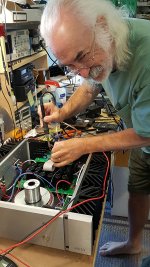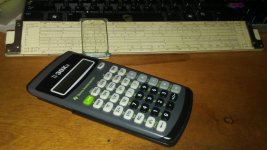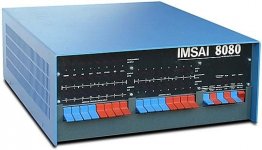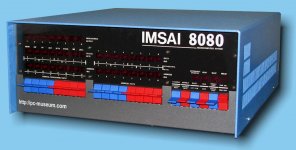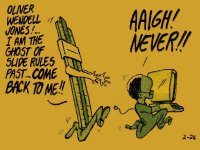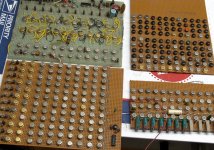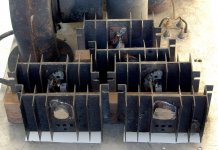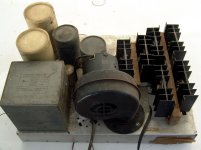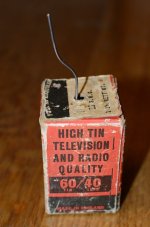TI 36X. I have two, plus a quantity of HP calculators.
Solder is Kester SN63PB37.
Hakko irons.
Good old 63/37. I’ve used it since the early 80s when I worked for the Canadian Navy. They taught us high reliability soldering techniques that I still use to this day. I recently bought another roll. There is a company named Koki that makes some very good lead free solder. I tried a sample and it soldered much better than the typical lead free stuff. It’s supposed to be easy on your tips as well.
KOKI Company Ltd. - Providing Soldering Materials and Solutions Worldwide
Ah, I see the difference now.
TI has made too dang many sci/eng calcs:
Datamath Calculator Museum
Album Scientific
I had an early Sinclair kit. 4-banger. $99! Never got the last short out of the LED matrix.
I beat a lot of math on a TI eng with 0.1" LEDs and a giant battery pack. Spent most of the time plugged into the wall. There was a 9V LED too, maybe the original TI-30 with simulated denim case. Had an early 40 or 55. But I'm a simple guy and the -30 feature-set is more than I need. Except they keep changing it. (Why you are holding a 36X old enough to drink.) For a while the -30 had too-small decimal point and I was scarfing older ones in rummage, even swapping bad displays with bad keys. My current beater was made 2015, dots are OK (with my new eyes). Don't like the green button but whatever.
The stick behind it is for show- it has a bizzare flaw. My daily stick is a sad AcuDesign with C&D scales and a lot of odd data (metric-yard, pounds per gallon, 1/64-decimal) printed on back. I have a ConstructionMaster but don't use it enough to be fluent converting rise/run to cubic-yards.
TI has made too dang many sci/eng calcs:
Datamath Calculator Museum
Album Scientific
I had an early Sinclair kit. 4-banger. $99! Never got the last short out of the LED matrix.
I beat a lot of math on a TI eng with 0.1" LEDs and a giant battery pack. Spent most of the time plugged into the wall. There was a 9V LED too, maybe the original TI-30 with simulated denim case. Had an early 40 or 55. But I'm a simple guy and the -30 feature-set is more than I need. Except they keep changing it. (Why you are holding a 36X old enough to drink.) For a while the -30 had too-small decimal point and I was scarfing older ones in rummage, even swapping bad displays with bad keys. My current beater was made 2015, dots are OK (with my new eyes). Don't like the green button but whatever.
The stick behind it is for show- it has a bizzare flaw. My daily stick is a sad AcuDesign with C&D scales and a lot of odd data (metric-yard, pounds per gallon, 1/64-decimal) printed on back. I have a ConstructionMaster but don't use it enough to be fluent converting rise/run to cubic-yards.
Attachments
PRR, I used a TI-59 in Jr. High and have been wondering just which model it was. Thanks for that museum link which answered my question.
Very great computing geek piece " à la Star Trek" style 
Daniel Tammet - The Boy With The Incredible Brain [1/5]
Vimeo pocket calculator 8-bit - Bing video

Daniel Tammet - The Boy With The Incredible Brain [1/5]
Vimeo pocket calculator 8-bit - Bing video
Attachments
I have an IMSAI 8080 kit sitting in the original pack.
Procrastination really pays off sometimes.
Papa is also a Suave guy! Me...I'm a Casio, still have the one, not programmable, with one memory storage, that got me through engineering.
Papa is also a Suave guy! Me...I'm a Casio, still have the one, not programmable,
with one memory storage, that got me through engineering.
I got through 4 years of engineering with a $3 plastic slide rule from the drug store.
In year 5, I got the fabulous new TI SR-50, which you had to preorder for $150.
Papa is also a Suave guy! Me...I'm a Casio, still have the one, not programmable, with one memory storage, that got me through engineering.
I have at least one Casio, currently in the living room.
> 4 years of engineering with a $3 plastic slide rule from the drug store.
Surely a Stirling. http://www.sliderulemuseum.com/Sterling.htm
Absolutely excellent sticks for most purposes. More accurate than eyes. A bit sticky when new, pencil-rub and much use helped, though real stick-wizards clung to the best old sticks.
These completely obliterated the market for $9 pearwoods like Charvoz-Roos. Stirling spent a lot of money for molding, so at high volume the sliderules were almost free, and huge quantities pushed to drugstores etc. As late as 1988 I could still grab a few in a college book-store. As we know, Stirling built up stock just in time for LOGgy calculators to come down from $500 to $50 to $25 and lower; Square-Root calcs hit $5 fast and then $2 (I have seen $0.50). I used to go past the old Stirling works; I wish I'd gone in with a large box to clean-up.
Surely a Stirling. http://www.sliderulemuseum.com/Sterling.htm
Absolutely excellent sticks for most purposes. More accurate than eyes. A bit sticky when new, pencil-rub and much use helped, though real stick-wizards clung to the best old sticks.
These completely obliterated the market for $9 pearwoods like Charvoz-Roos. Stirling spent a lot of money for molding, so at high volume the sliderules were almost free, and huge quantities pushed to drugstores etc. As late as 1988 I could still grab a few in a college book-store. As we know, Stirling built up stock just in time for LOGgy calculators to come down from $500 to $50 to $25 and lower; Square-Root calcs hit $5 fast and then $2 (I have seen $0.50). I used to go past the old Stirling works; I wish I'd gone in with a large box to clean-up.
Attachments
Casio fx-7000G - Wikipedia
Is the one I had to buy entering school. Had it in my back pocket the first day, Broke the LCD and rendered it 1/3 useless. I couldn't afford another, but somehow made it through.
🙂
This model seems to have been lost in the TI sea.
Is the one I had to buy entering school. Had it in my back pocket the first day, Broke the LCD and rendered it 1/3 useless. I couldn't afford another, but somehow made it through.
🙂
This model seems to have been lost in the TI sea.
Surely a Stirling.
You are correct, sir. They were sold on the rack next to erasers and pencil boxes, $2.95 each.
Surely a Stirling.
High school electronics class - 1968, the affordable pocket calculator was not yet invented. There were two choices for a high school kid. Stirling for about $3 and Keuffel & Esser for about $4. I got the K&E. I brought it to some of my college classes in the 90's and people said WTF is that? I think I tossed it when I moved about 4 years ago.
I left my parents house under less than amicable circumstances taking what I could stuff into a 1965 Dodge Coronet. I held on to a few things, mostly stuff that I had built, or was still work in progress. The slide rule wound up in my tool box, and for all I know could still be here in a box of stuff I haven't opened yet.
I left my parents house in 1973 when I got a job at Motorola 40 miles north, where I worked for 41 years. I bought a house in 1977, and lived there for 37 years. I knew that my career was on life support for the last 4 years of so, so my wife and I went on a major "stuff" elimination program because we both wanted to leave south Florida when my career ended. Everything that I didn't want to move got sold, given away or trashed. During that big purge a few things from my youth were found, photographed, then trashed.
Here are some pictures of a 300 watt (at an unknown but high level of distortion) solid state audio amp that I built in high school. I had stashed it in a shed where it got wet a few times.
I started designing and building a digital music synthesizer in high school. I ripped the DIY baords out of the cabinet (an old organ) and took them with me. The pictures show several perf boards with hundreds of 8 pin round metal IC chips. They were all RTL logic gates and flip flops obtained by dumpster diving behind the Coulter Diagnostic plant in the late 60's. I can't throw away something that took me over a year to build back in 1971. I'm going to power some of these up some day to see if any of the 60 year old IC chips still work.
I left my parents house in 1973 when I got a job at Motorola 40 miles north, where I worked for 41 years. I bought a house in 1977, and lived there for 37 years. I knew that my career was on life support for the last 4 years of so, so my wife and I went on a major "stuff" elimination program because we both wanted to leave south Florida when my career ended. Everything that I didn't want to move got sold, given away or trashed. During that big purge a few things from my youth were found, photographed, then trashed.
Here are some pictures of a 300 watt (at an unknown but high level of distortion) solid state audio amp that I built in high school. I had stashed it in a shed where it got wet a few times.
I started designing and building a digital music synthesizer in high school. I ripped the DIY baords out of the cabinet (an old organ) and took them with me. The pictures show several perf boards with hundreds of 8 pin round metal IC chips. They were all RTL logic gates and flip flops obtained by dumpster diving behind the Coulter Diagnostic plant in the late 60's. I can't throw away something that took me over a year to build back in 1971. I'm going to power some of these up some day to see if any of the 60 year old IC chips still work.
Attachments
Did you work for Coulter? I have worked for a large clinical lab as a biomedical tech since 83 and have certainly seen a lot of Coulter gear in the past. When they merged with Beckman we still had BC counters up until 2015.
- Status
- Not open for further replies.
- Home
- Amplifiers
- Pass Labs
- Is that a TI-30?
